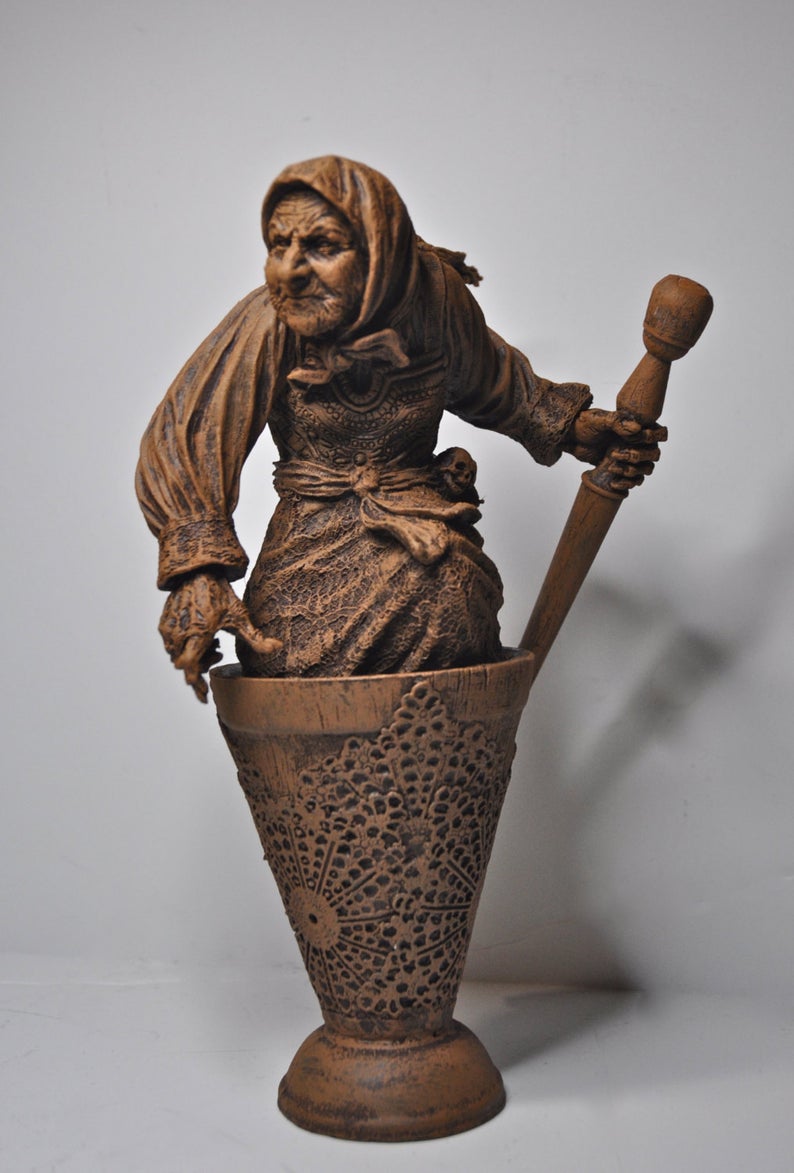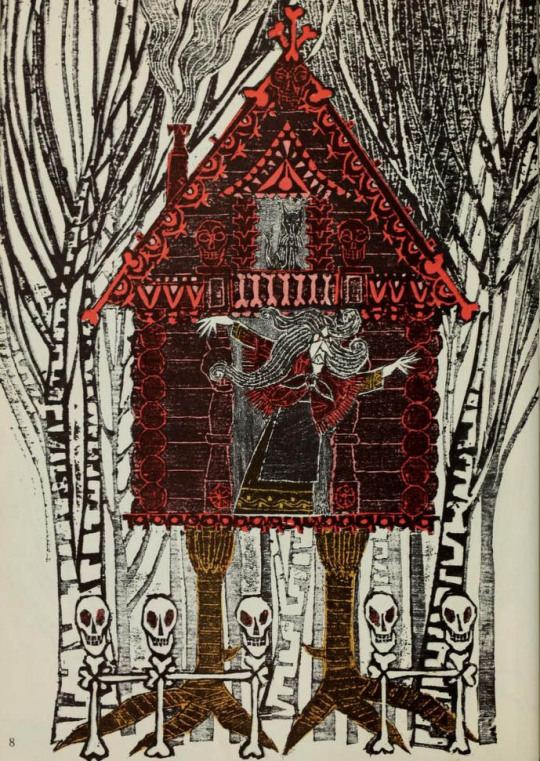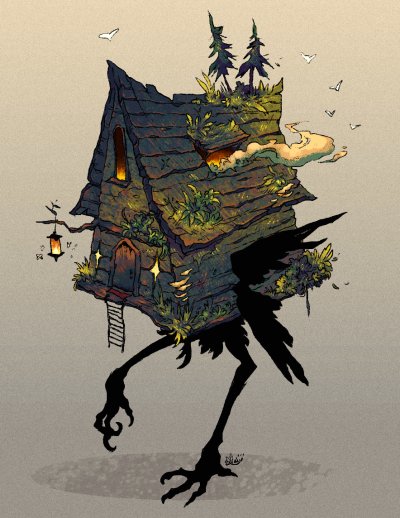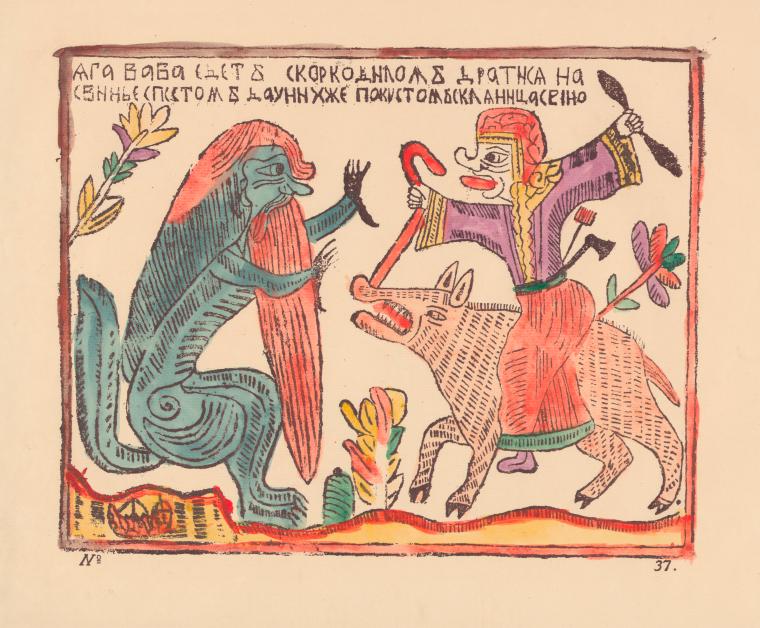Baba Yaga is a supernatural being who appears as a ferocious-looking old crone and is found across Slavic folklore traditions. Particularly in Russian lore Baba Yaga flies around in a mortar, wields a pestle and dwells deep in the forest in a shack that stands on chicken legs
Despite equivalence in the witches of European folklore Baba Yaga may help those who seek her help, often playing a maternal role and nurturing close relationships with forest birds and animals. The endurance of the Baba Yaga myth is perhaps down to the figure’s ambiguity.
Depictions vary greatly, ranging from a child-eating monster, to helping a lovelorn protagonist find his missing bride. Folklorist Andreas Johns identifies Baba Yaga as a representation of ‘Cloud, Moon, Death, Winter, Snake, Bird, Pelican or Earth Goddess,
totemic matriarchal ancestress, female initiator, phallic mother, or archetypal image.’
The very name Baba Yaga is multi-faceted. In Old Russian baba can mean grandmother (‘babushka’) but also variously midwife, sorceress or fortune teller.
The very name Baba Yaga is multi-faceted. In Old Russian baba can mean grandmother (‘babushka’) but also variously midwife, sorceress or fortune teller.
In contemporary Polish slang baba is a pejorative for woman (especially an old or foolish woman). Across Slavic languages and dialects we see baba more semantically aligned with animals, natural phenomena, and food such as types of mushrooms, cakes and pears.
Yaga meanwhile appears to stem from the Serbo-Croatian root word for horror or shudder, the Slovene for anger and/or disease, the Old Czech for witch as well as the modern Czech for ‘wicked wood nymph.’
Further into West European languages the element ‘iaga’ has been traced to to Lithuanian engti (‘to abuse (continuously)’, or ‘to exploit’), Old English inca ('doubt or worry'), and Old Norse ekki (‘pain.’)
Such is her recognition Baba Yaga appeared in a great many wood block prints popular across the Slavic nations from the late 17th century. These were often satirical. One shows Baba Yaga astride a pig going to battle against a reptilian entity described as a crocodile.
The Tsar Peter the Great persecuted Old Believers, who in turn referred to him as a crocodile. Baba Yaga was also depicted in Finnish dress in mockery of Catherine I, the Finnish Tsarina.
Images:
Resin sculpture @dellamorteco
Ernest Small, illustration for children's book 𝘉𝘢𝘣𝘢 𝘠𝘢𝘨𝘢 (1966)
Baba Yaga's hut print by Barking Trees on Redbubble
Lubok print, 17th century Russia, unknown artist.
Resin sculpture @dellamorteco
Ernest Small, illustration for children's book 𝘉𝘢𝘣𝘢 𝘠𝘢𝘨𝘢 (1966)
Baba Yaga's hut print by Barking Trees on Redbubble
Lubok print, 17th century Russia, unknown artist.

 Read on Twitter
Read on Twitter





